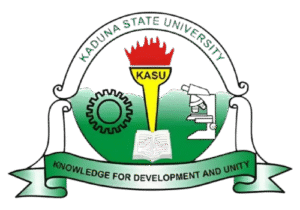In the educational landscape, a well-structured scheme of work is essential for effective teaching and learning. For Junior Secondary Schools (JSS 1 to JSS 3), having a comprehensive scheme of work is vital for both educators and students. This blog post will delve into the significance of a scheme of work, its components, and provide a detailed guide on how to develop a scheme that aligns with the needs of junior secondary students.
What is a Scheme of Work?
A scheme of work is a structured plan that outlines the curriculum content, teaching strategies, assessment methods, and resources required for a specific period. It serves as a blueprint for teachers, guiding them on what to teach, when to teach it, and how to assess student understanding. For junior secondary education, a well-prepared scheme of work ensures that students build a solid foundation in various subjects.
Importance of a Scheme of Work
- Clarity and Focus: A scheme of work provides clear objectives and goals for each subject, helping teachers stay focused on the curriculum requirements.
- Effective Planning: It allows teachers to plan lessons systematically, ensuring that all necessary content is covered within the academic year.
- Assessment Preparation: A comprehensive scheme includes assessment strategies, enabling teachers to evaluate student progress effectively.
- Resource Allocation: It helps in identifying the resources and materials needed for each lesson, facilitating better classroom management.
- Facilitating Differentiation: Teachers can tailor their teaching strategies to meet the diverse learning needs of students, ensuring that all learners can achieve success.
Components of a Scheme of Work
A typical scheme of work for Junior Secondary School should include several key components:
- Subject Overview: A brief description of the subject, its relevance, and how it fits into the overall curriculum.
- Learning Objectives: Clear, measurable goals that outline what students are expected to achieve by the end of each lesson or unit.
- Content Outline: A detailed breakdown of topics to be covered, including subtopics and key concepts.
- Teaching Strategies: Methods and approaches to be used in delivering the content, such as lectures, group work, hands-on activities, and technology integration.
- Assessment Methods: Strategies for evaluating student understanding, including formative and summative assessments.
- Resources: A list of textbooks, online resources, and materials required for effective teaching.
- Time Allocation: An estimated timeline for each topic, ensuring that all content is covered within the school year.
- Reflection and Adaptation: A section for teachers to reflect on the effectiveness of their teaching strategies and make necessary adjustments.
Developing a Scheme of Work for JSS 1 – JSS 3
Step 1: Identify the Curriculum Framework
The first step in developing a scheme of work is to identify the curriculum framework provided by the educational authority. This framework outlines the subjects, topics, and learning outcomes expected for junior secondary education.
Step 2: Choose Subjects
For JSS 1 to JSS 3, students typically study a variety of subjects, including:
- English Language
- Mathematics
- Science (Integrated Science, Biology, Chemistry, Physics)
- Social Studies
- Business Studies
- Agricultural Science
- Physical Education
- Creative Arts
Step 3: Set Learning Objectives
For each subject, establish clear learning objectives. For example, in English Language, objectives might include:
- Improve vocabulary and comprehension skills.
- Develop writing and communication skills.
- Understand and analyze different texts.
Step 4: Outline Content
Create a content outline for each subject. For instance, the content for Mathematics may include:
- JSS 1: Number Operations, Algebra, Geometry
- JSS 2: Fractions, Decimals, Statistics
- JSS 3: Probability, Ratio and Proportion, Measurement
Step 5: Select Teaching Strategies
Choose appropriate teaching strategies for each topic. For example, in Science, you might incorporate:
- Hands-on experiments
- Group discussions
- Multimedia presentations
Step 6: Design Assessment Methods
Develop assessment methods to evaluate student progress. This may include:
- Quizzes and tests
- Project-based assessments
- Class participation and homework
Step 7: Identify Resources
List the resources needed for each subject. This may include:
- Textbooks and reference materials
- Online resources and educational websites
- Laboratory equipment for Science subjects
Step 8: Allocate Time
Estimate the time required for each topic, ensuring that the entire curriculum is covered. Consider the academic calendar and break periods.
Step 9: Reflect and Adapt
After implementing the scheme of work, teachers should regularly reflect on its effectiveness. Gather feedback from students and make necessary adjustments to improve teaching and learning outcomes.
Scheme of Work
Subject: English Language
| Week | Topic | Learning Objectives | Teaching Strategies | Assessment Methods | Resources |
|---|---|---|---|---|---|
| 1 | Introduction to Grammar | Understand parts of speech | Lecture, group activities | Quiz on parts of speech | English textbook |
| 2 | Vocabulary Development | Enhance vocabulary through reading | Reading sessions, vocabulary games | Vocabulary test | Reading materials |
| 3 | Comprehension Skills | Analyze and interpret texts | Group discussions, comprehension exercises | Comprehension test | Selected texts |
| 4 | Writing Skills | Develop writing skills for different purposes | Writing workshops, peer reviews | Writing assignment | Writing prompts |
| 5 | Literature Appreciation | Appreciate different genres of literature | Book clubs, literature circles | Book report | Various literary texts |
Conclusion
Creating a comprehensive scheme of work for Junior Secondary School is essential for effective teaching and learning. By following the outlined steps, educators can develop a structured plan that meets the diverse needs of students and aligns with curriculum requirements. A well-prepared scheme of work not only enhances teaching efficacy but also fosters a positive learning environment, setting the stage for academic success.
Final Thoughts
Incorporating a robust scheme of work in Junior Secondary Schools can significantly impact student learning outcomes. It allows teachers to provide a structured and coherent learning experience while also accommodating the unique needs of each student. As education continues to evolve, ensuring that our schemes of work are up-to-date and reflective of best practices will be crucial in preparing students for future challenges.
By focusing on the Scheme Work Junior Secondary, educators can create a more engaging and effective learning environment, ultimately leading to improved educational outcomes for all students.








